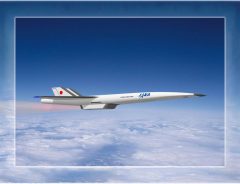
Source: © JAPAN Forward
INTERVIEW | Koichi Wakata on the Prospects of a Japanese Astronaut on the Moon
- Tags:
- astronaut / JAXA / Koichi Wakata / moon landing
Related Article
-

Japan approves mission to land spacecraft on Mars
-

Across the Pacific in Two Hours: JAXA Sets Sights on Mach 5 Supersonic Aircraft
-

Japanese “Asteroid Jelly” Brings Otherworldly Sweets To Convenience Stores
-

Gundam manholes land in Sagamihara City adding to Japan’s impressive lineup of manhole designs
-

Space Brothers’ Creator Contributes To The First Animation Film Ever Made In Space
-

Phoenix-Like Clouds Illuminate The Skies of Okinawa Before Daybreak


Shinji Ono, Sankei Shimbun, JAPAN Forward
The Japanese and United States governments announced in July a joint declaration for cooperation in the U.S.-led Artemis manned lunar probe project, bringing closer to reality the first-ever landing on the moon by a Japanese astronaut.
What does it mean for Japan? Who would the likely astronaut be for such a moon landing, and when?
Searching for answers to these and other questions, The Sankei Shimbun recently sat down with Dr. Koichi Wakata, 57, of the Japan Aerospace Exploration Agency (JAXA) to learn more about the prospects for the groundbreaking project.
Dr. Wakata is an astronaut and senior advisor to JAXA, and has been playing a leading role in propelling Japan’s manned space exploration projects forward.
Excerpts of the interview follow.
What is the significance of the joint declaration?
First, it clarifies that the surface of the moon is now the target of Japanese astronauts’ future activities. Recall that Japan’s manned space projects started with astronaut Mamoru Mohri’s low Earth orbit (LEO) activities back in 1992. It is a truly huge leap forward that they will now be expanded to the moon.
How would a landing on the moon affect Japan?
The nation’s younger generation will be inspired to further pursue science and technology as this country takes on the challenge of a lunar probe with its state-of-the-art technologies and goes so far as to put a Japanese astronaut on the moon’s surface.
This, in turn, can be expected to help Japan further develop as a creative scientific and technological powerhouse. The lunar probe’s educational impact will be great indeed, I believe.
When do you think the manned lunar voyage will be realized?
The United States plans to build the Lunar Gateway, or a mini-space station in lunar orbit, through international cooperation. I hope to see the Gateway and activities on the moon’s surface becoming reality as early as possible.
I am looking forward to progress in the preparations by the international partners, through arrangements with the U.S. NASA (National Aeronautics and Space Admiration), with a view to materializing the project in the 2020s. However, a specific timeframe has yet to be worked out.
How many times will astronauts be able to be on the moon’s surface?
There will probably be two astronauts landing on the moon in each of the initial rounds of the Artemis probes. As the United States plans to carry out a landing on the lunar surface once a year or so, I think the opportunity for those other than Americans to be on the moon’s surface will strictly be limited.
It will be similar to the case of the ISS (International Space Station), which means it will be important to make the most effective use of each scarce, invaluable opportunity as it comes up.
(...)
Written by Japan ForwardThe continuation of this article can be read on the "Japan Forward" site.
INTERVIEW | Koichi Wakata on the Prospects of a Japanese Astronaut on the Moon